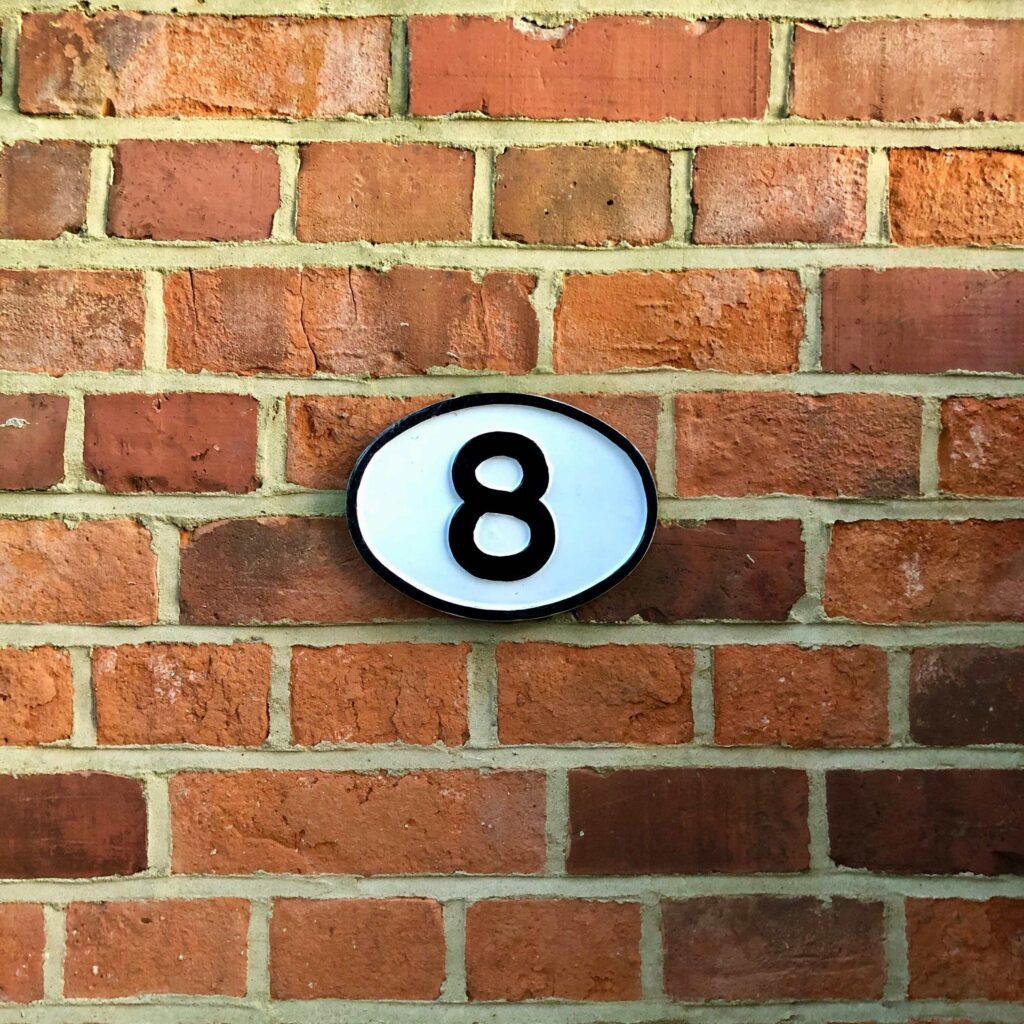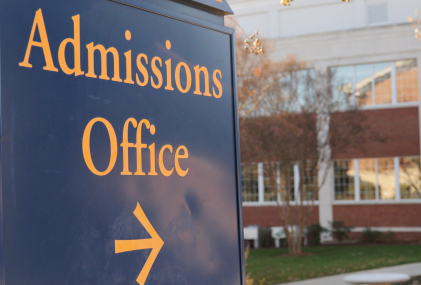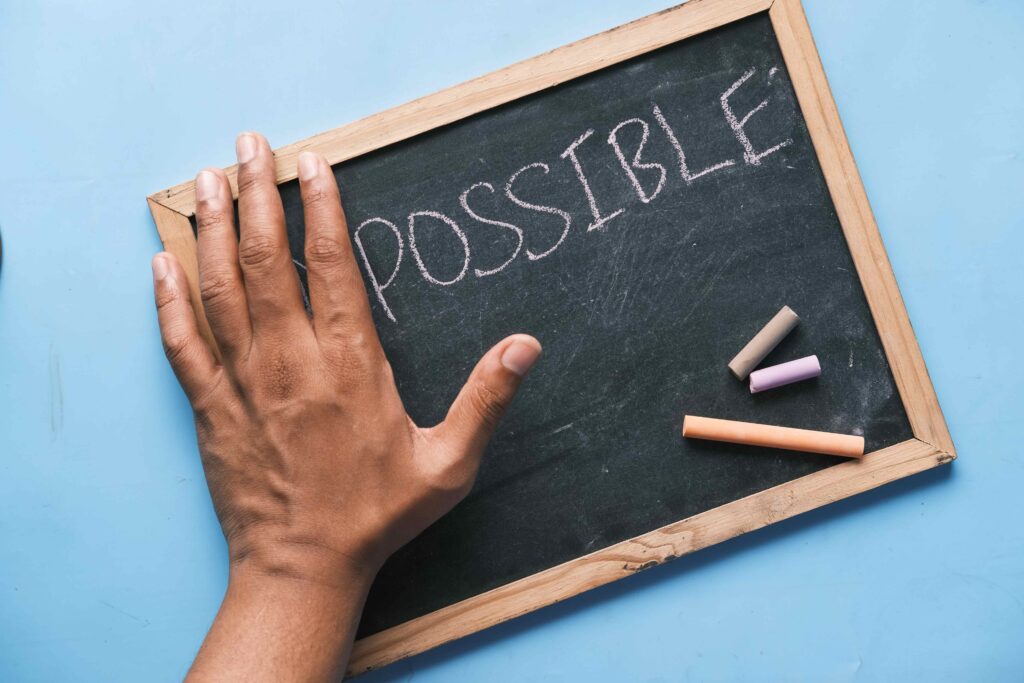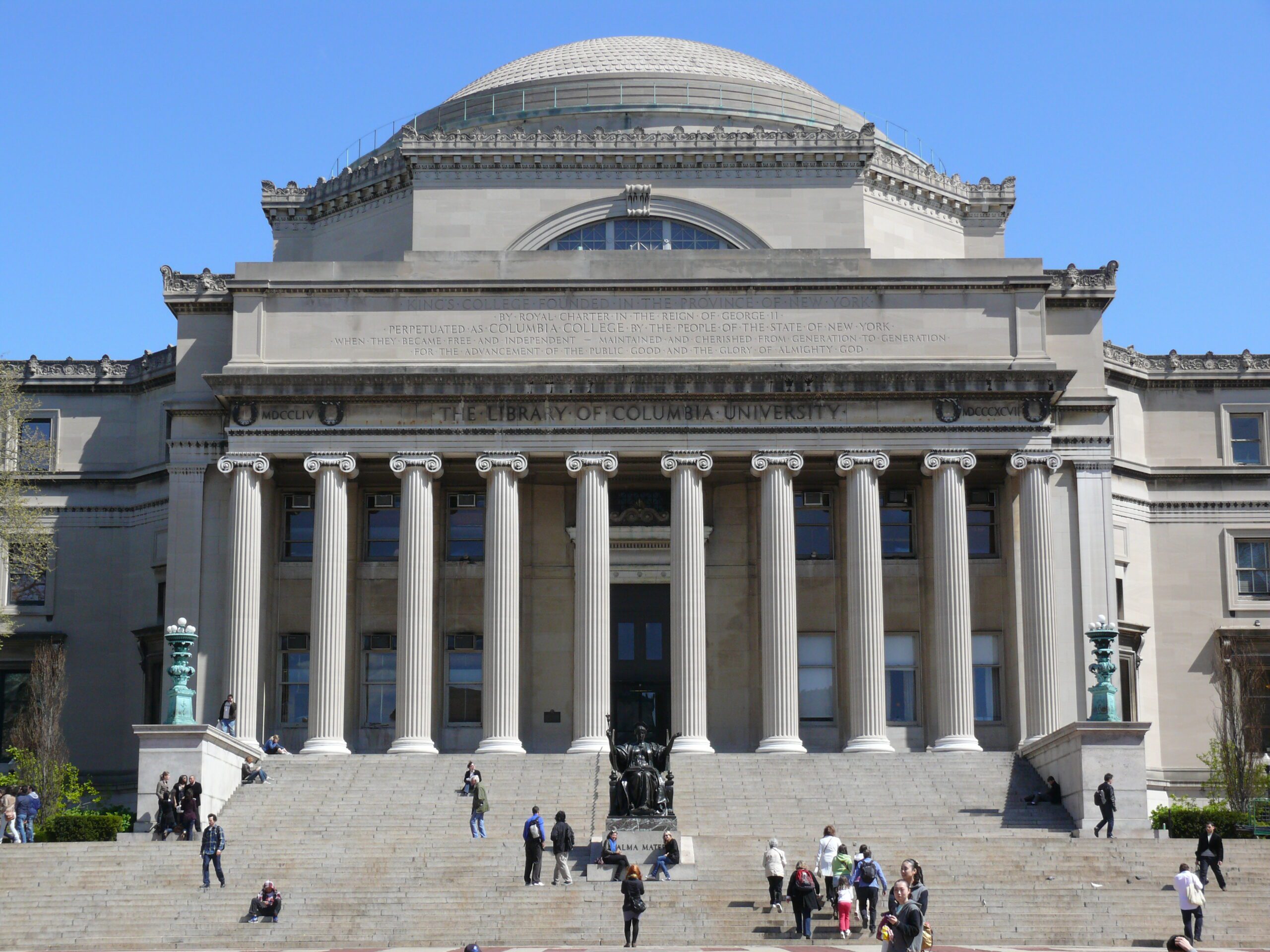
Ivy League Acceptance Rates
If you’re applying to Ivy League schools, it’s natural that you might be anxious about Ivy League acceptance rates. Though we don’t yet know the Ivy League acceptance rates 2024, we can predict how many students the Ivies will accept by looking at the Ivy League acceptance rates 2022 and Ivy League acceptance rates 2023. The Ivy League acceptance rates are some of the lowest college acceptance rates in the U.S. In fact, they’re part of what makes these schools so prestigious.
In this comprehensive guide to Ivy League acceptance rates, we’ll break down everything you need to know about how to get into Ivy League schools. We’ll provide you with an Ivy League schools list before going over the lowest acceptance rate colleges. Then, we’ll look at past Ivy League acceptance rates, such as the Ivy League acceptance rates 2022 and Ivy League acceptance rates 2023, to try to predict the Ivy League acceptance rates 2024. Finally, we’ll talk about what to expect on Ivy League acceptance day.
But, first, before getting into acceptance rates, let’s talk about the schools that make up the Ivy League.
How many Ivy League schools are there?

If you want to apply to the most competitive schools in the country, then your college list will likely have some Ivy League schools. While you may have heard of the Ivies, you may not know just how many Ivies there are.
In total, there are eight Ivy League schools. All eight of the Ivies are considered highly prestigious and highly competitive schools. However, it isn’t necessarily the best idea to apply to all eight Ivies. The past years’ Ivy League acceptance rates are incredibly low, and the Ivy League acceptance rates 2024 will likely be just as low. So, when building your college list, pick only your favorite Ivies to be your “reach” schools. Then, you can round out your list with “targets” and “safeties” to make sure that it’s balanced.
Take our quiz below to get a score on your college admissions readiness!
Now, let’s take a closer look at the eight Ivies and the Ivy League acceptance rates.
What Are The 8 Ivy League Schools?

To know how to get into Ivy League schools, you need to know about all of the different Ivies.
Below you’ll find our list of Ivy League schools. The Ivy League schools list is in alphabetical order—not by the Ivy League acceptance rates. Therefore, don’t assume that the Harvard acceptance rate is higher than the Yale acceptance rate or that the Brown acceptance rate is higher than the Princeton acceptance rate, just because of where they sit on the Ivy League schools list!
Ivy League schools list:
- Brown University
- Columbia University
- Cornell University
- Dartmouth College
- Harvard University
- Princeton University
- University of Pennsylvania
- Yale University
Ivy League acceptance rates are notoriously low, so many people assume that the Ivies are just a collection of the lowest acceptance rate colleges. However, that’s not true. In fact, there are colleges with lower college acceptance rates than the Ivies. The Ivy League acceptance rates aren’t the only factor that distinguishes the Ivies from other universities.
The schools you see on the Ivy League schools list are grouped by an athletic conference—not an academic designation. However, the renowned universities on this Ivy League schools list are known for their low Ivy League acceptance rates, premiere academic offerings, and famous graduates.
Now that we’ve gone over the Ivy League schools list, you might be wondering which Ivies have the lowest and highest acceptance rates. You might even be wondering what to expect from Ivy League acceptance rates 2024. To answer these questions, we have to look at how the Ivy League acceptance rates have changed over time.
Comparing Ivy League Acceptance Rates Over Time
To many, the Ivy League acceptance rates seem lower than ever. In fact, this is a common trend in college acceptance rates. To illustrate these changes, we’ve created a table of Ivy League acceptance rates from the last five years. The table includes the Ivy League acceptance rates 2022 and the Ivy League acceptance rates 2023, as well as a few other years.
Note this table lists Ivy League acceptance rates by the year in which the student applied. For example: if you applied in late 2018 or January 2019, your acceptance rate will be in the first column—and you would have been part of the most recent graduating class, the class of 2023!
Here are the last five years of Ivy League acceptance rates:
| 2018-19 | 2019-20 | 2020-21 | 2021-22 | 2022-23 | |
| Yale acceptance rate | 6.1% | 6.5% | 5.3% | 4.6% | 4.5% |
| Harvard acceptance rate | 4.5% | 4.92% | 3.43% | 3.19% | 3.41% |
| Princeton acceptance rate | 5.48% | 5.78% | 5.63% | 4.0% | 5.7% |
| Brown acceptance rate | 6.6% | 6.9% | 5.5% | 5% | 5.1% |
| Dartmouth acceptance rate | 7.93% | 8.79% | 6.17% | 6.24% | 6.23% |
| UPenn acceptance rate | 7.44% | 8.07% | 5.68% | 6% | 5.59% |
| Cornell acceptance rate | 10.55% | 10.71% | 8.17% | 6.91% | 7.34% |
| Columbia acceptance rate | 5.14% | 6.15% | 3.66% | 3.73% | 3.93% |
Phew, that’s a lot of numbers! But what are the general trends of these Ivy League acceptance rates? Understanding the past acceptance rates, like the Ivy League acceptance rates 2022 and the Ivy League acceptance rates 2023, can help us predict the Ivy League acceptance rates 2024. And, knowing what you’re up against can help you better understand your chances of gaining admission to Ivy League schools.
Acceptance rates trending downward
As you can see from these charts, most of the Ivy League acceptance rates have been getting lower over time. The Ivy League acceptance rates 2022 are higher than the Ivy League acceptance rates 2023, so we can predict that the Ivy League acceptance rates 2024 might be even lower.
This trend has been documented for a few years. For example, students who applied to UPenn in 2017 faced the lowest rate yet on Ivy League acceptance day. And it only got lower in 2018, which is when our chart begins. Then we see the Ivy League acceptance rates 2022 decline even further. However, for some schools, the Ivy League acceptance rates 2023 got higher.
In the last year, some Ivy League acceptance rates have gone back up. Compared to Ivy League acceptance rates 2022, the Ivy League acceptance rates 2023 are higher at some schools. For instance, the Harvard acceptance rate, Princeton acceptance rate, Brown acceptance rate, and Cornell acceptance rate all went up in the past two years.
However, there was a drastic drop in acceptance rates for some Ivies. The UPenn acceptance rate dropped almost 2% over the last five years, and at Cornell, it dropped nearly 3%. But don’t worry, while getting into the Ivies is certainly challenging, it isn’t impossible.
How to get into an Ivy League School
If you’re wondering how to get into an Ivy League school, you may find trying to beat the odds of the Ivy League acceptance rates 2024 a bit daunting. But, experts say these rates may have “bottomed out,” meaning that the Ivy League acceptance rates 2022 and the Ivy League acceptance rates 2023 might be the lowest they’ll ever be. We’re crossing our fingers that the Ivy League acceptance rates 2024 rise back up again!
Even so, why are the Ivy League acceptance rates 2022 and the Ivy League acceptance rates 2023 so low? This is likely due to changes such as test-optional policies at many schools. This particular policy change allowed more students to apply while the schools’ number of spots to fill remained the same. One expert said to the New York Post that this may represent “a larger and less qualified applicant pool rather than a more challenging admissions landscape.”
So when you’re looking at the Ivy League acceptance rates 2022 and the Ivy League acceptance rates 2023, don’t despair—to learn how to get into an Ivy League school, there are more things to consider than simply acceptance rates. Plus, the Ivy League acceptance rates 2024 might rise! In fact, this Ivy League acceptance day might bring higher rates than we’ve seen in the past few years.
It’s also important to remember when learning how to get into Ivy League schools that the Ivy League acceptance rates are often different based on when you apply. In our next section, we’ll do a deep dive into this very topic.
Ivy League Acceptance Rates: Early vs. Regular Decision

Students can apply to Ivies during their early admissions process or regular admissions process. When you apply Early Decision, you’ll find out your admission decision in December. If you apply Regular Decision, you will get a decision in March on a day referred to as Ivy League acceptance day.
While it’s known application timelines will vary, did you know Ivy League acceptance rates can change depending on when you apply? For example, for the class of 2027, the Harvard acceptance rate was 7.56% for early applicants and only 2.57% for regular applicants. Similar trends happen with the Yale acceptance rate, Princeton acceptance rate, Brown acceptance rate, Dartmouth acceptance rate, and UPenn acceptance rate, though not always as drastically.
If an Ivy is your dream school, here’s a tip for how to get into Ivy League schools: apply early. And keep in mind these higher college acceptance rates exist in both Early Decision and Early Action schools, like Harvard. One benefit of Early Action deadlines is you aren’t bound to attend the school if you get in. So, it’s a good choice if you want to take advantage of the comparatively lower Ivy League acceptance rates, but still want the option to apply to other schools.
Now that we’ve compared the Ivy League acceptance rates over time and for different application deadlines, let’s look at which Ivy you might statistically have the best chance of getting into.
Which Ivy League School Has The Highest Acceptance Rate?

So, which of the Ivy League acceptance rates is the highest? Though we can’t say what the highest acceptance rate will be in the Ivy League acceptance rates 2024, generally, the highest Ivy League acceptance rates can be found at Cornell.
Cornell University is located in Ithaca, New York. It was the first Ivy League school to admit women and has many unique academic offerings, such as its hospitality school and the School of Industrial and Labor Relations. While Cornell’s acceptance rate might be the highest of the Ivies, keep in mind it is still incredibly low compared to other colleges and universities.
What Is The Easiest Ivy League School To Get Into?
Considering acceptance rates alone, you may be wondering if Cornell is the easiest Ivy League school to get into. The answer—not necessarily. Just because a school has the highest Ivy League acceptance rate, doesn’t mean it will be the easiest school for you personally to get into. Every applicant is different, and every school is different.
When figuring out how to get into Ivy League schools, there are many factors to consider. Which school have you demonstrated the most interest in by going on tours or interviewing? Do you have any attributes or interests that might make a specific school a better fit? You may find participating in a particular sport or having a parent who attended an Ivy League school can boost your admissions odds.
Especially when looking at the lowest acceptance rate colleges, many of which you’ll see on the Ivy League schools list, it’s nearly impossible to predict which school you will have a better shot of getting into. Since the Ivy League acceptance rates are so selective, each school is considered a “reach school.” Even though the Harvard acceptance rate, the Princeton acceptance rate, and the Yale acceptance rate might be lower than the Dartmouth acceptance rate, the Brown acceptance rate, and the Upenn acceptance rate, remember they’re all extremely competitive schools.
Balancing your college list
Ultimately, you’ll need to look at more than just Ivy League acceptance rates when deciding what school will be the best fit for you. That means being selective about which schools end up on your college list. When you’re applying to the lowest acceptance rate colleges, you’ll want to balance out your list. This means that you should only be applying to a few Ivy League colleges— not every single one. And, you should be applying to other schools that have higher acceptance rates to maximize your chances of getting into a college that you love. Remember, there’s much more to finding the perfect school than college acceptance rates!
Instead of looking for shortcuts for how to get into Ivy League schools, focus on finding your best fit. That means researching each school thoroughly and deciding which school on the Ivy League schools list is right for you, regardless of college acceptance rates.
What makes the Ivy League so selective?

We know the Ivy League is extremely selective, but, why? Well, part of the Ivy League’s allure is that they are some of the lowest acceptance rate colleges in the nation, and thus are quite exclusive. Many people are drawn to the Ivies simply because of this perceived exclusivity. And, the more people who apply, the lower the acceptance rates become, proliferating the cycle.
The Ivy League colleges are also some of the oldest in the country. Harvard was founded in 1636, over a hundred years before the U.S. declared its independence. Because of this, Harvard graduates have held some of the highest positions of power in the country: U.S. political dynasties like the Roosevelts and the Kennedys were Harvard graduates. And, Barack Obama went to Harvard Law School.
The Ivy League colleges are also some of the wealthiest colleges in the U.S. Harvard, Yale, and Princeton all make it into the top 10 richest colleges in the nation. This means that these schools have a lot of money to procure incredible resources for research and learning, as well as fund the education of many students from a variety of socioeconomic backgrounds.
These factors all contribute to the prestige of the Ivy League. However, these aspects are not unique to schools on the Ivy League schools list. Some of the lowest acceptance rate colleges are not Ivies. Additionally, there are many non-Ivies with amazing academic opportunities, renowned research programs, and ample endowments to fund student life.
Ivy League Acceptance Rates vs. Other Schools
What are the other lowest acceptance rate colleges? The college acceptance rates within the Ivy League are lower than many other schools. However, just being in the Ivy League doesn’t mean a school has the lowest acceptance rates.
Of the top ten lowest acceptance rate colleges, the Ivy League makes up just 5 of the schools listed. That’s only half, which means that there are extremely selective schools outside the Ivy League.
When thinking about how to get into an Ivy League school, remember that these acceptance rates are always changing. Don’t simply choose a school because it currently has the lowest college acceptance rates. A few years ago, Stanford topped the list, and now it’s fourth!
Ultra-Competitive Schools Outside the Ivy League

So, what are the most competitive schools outside of the Ivy League? Let’s take a look at some non-ivies with low college acceptance rates.
California Institute of Technology
CalTech ties with Harvard for the lowest college acceptance rates. Both have a 3% acceptance rate. However, CalTech only received 16,626 applicants, while Harvard received nearly four times that amount at 61,221. Academically, CalTech is a much more specialized school, offering one of the best educations in STEM fields in the U.S.
Massachusetts Institute of Technology
Another noteworthy technical school is the Massachusetts Institute of Technology or MIT. MIT has a 4% acceptance rate and received about 33,000 applicants. MIT is located in Cambridge, Massachusetts, only a few train stops away from Harvard.
Stanford University
Stanford University is another non-Ivy with one of the lowest college acceptance rates. Often thought of as an unofficial Ivy, Stanford is one of the best colleges on the West Coast. If you’re looking for the Ivy League experience but can’t handle the cold and rain of New England, Stanford might be a good fit for you.
University of Chicago
Tied with the Yale acceptance rate is the University of Chicago, which most recently only let in 5% of applicants. The University of Chicago has a very intellectual reputation and likes its students to stand out. It has notoriously creative essay prompts that ask its applicants to think out of the box. UChicago is a great example of why just looking at college acceptance rates won’t show you the whole picture: you need to get a feel for each university’s style and personality to see what college will be the best fit for you.
Duke University
Another stellar university that is not on the list of Ivy League colleges is Duke University. Sometimes referred to as “the Harvard of the South,” Duke has a 6% acceptance rate—tied with the Dartmouth acceptance rate.
If you’re choosing between Duke and Dartmouth, look beyond their college acceptance rates. Duke is a suburban campus in North Carolina, whereas Dartmouth is in rural New Hampshire. Duke is a slightly larger school, with a student body of around 6,000 compared to Dartmouth’s 4,000. Additionally, Duke is ranked much higher than Dartmouth by U.S. News—7th compared to 18th. This, and other factors, could be more reason to look past the Dartmouth acceptance rate when deciding where to apply!
What College Has The Lowest Acceptance Rate?

According to U.S. News, there are two schools with the lowest college acceptance rates: Harvard and CalTech. Luckily, Harvard and CalTech are very different schools. If you’re looking for maximum selectivity in your college application process, these schools give you a lot to choose from. Harvard is a liberal arts college in Cambridge, Massachusetts, and CalTech is a specialized technical college outside of Los Angeles.
Each school has its benefits. If you want to study the humanities or the social sciences, Harvard should be a no-brainer. But, if you’re looking to be the next big thing in Silicon Valley, you could consider CalTech—though historically Harvard has also been the home of some pretty serious scientific innovators like Mark Zuckerberg and Bill Gates. However, Zuckerberg and Gates both dropped out of Harvard. Maybe if they were at CalTech, they would’ve stayed!
How to Get into Ivy League Schools

Now that we’ve discussed various schools with incredibly low college acceptance rates, let’s take a step back. When you’re trying to figure out how to get into Ivy League schools, where do you even start?
First, there’s no set playbook for how to get into Ivy League schools. Even though there are steps you can take and resources you can take advantage of, how to get into Ivy League schools is an elusive question of many And, it’s one that still has no clear answer.
However, there are some tried and true tactics that students use to learn how to get into Ivy League schools. Let’s break them down below:
Tips for Getting Into the Ivies
1. Focus on your grades.
This might seem obvious, but to learn how to get into Ivy League schools, it’s crucial to understand the test scores and grades necessary to gain entry. Though there is no explicit cutoff, the average student at Harvard, Yale, or Princeton has a near-perfect GPA. If you’re wondering how to get into Ivy League schools without a perfect GPA, you’re not out of the running yet! Beyond grades, you have to rely on things like essays, interviews, and extracurriculars to impress the admissions committee.
2. Don’t just apply to a school because it’s an Ivy.
Sure, we’re talking about how to get into Ivy League schools, but as we just learned above, some of the most selective schools aren’t in the Ivy League. Do your research: you can watch these webinars to compare the different Ivies and learn which are the best fit for you.
3. Invest in your extracurriculars.
Find what makes you passionate, and spend time doing that thing. Factors like leadership positions and commitment to an organization or activity help to impress Ivy League admissions committees.
4. Work on creating stellar essays.
When every student has a 4.0 GPA, the essay can be the tipping point for your application. These essay examples from students who successfully figured out how to get into Ivy League schools are a great guide to get you started. Your essays are an opportunity to show the admissions committee who you are beyond academics. Take the time to truly make them shine!
5. Be yourself!
The first step to understanding how to get into Ivy League schools is understanding yourself—and we really mean that! Ivies in particular are looking for captivating individuals who have a strong sense of self. Remember that you need to show what you’ll bring to campus. Ivies are looking to have a diverse, passionate, and outstanding student body.
More Resources on the Ivy League

Looking for more resources on how to get into Ivy League schools? We’ve got you covered.
If you’re just getting to know the schools, try watching webinars to learn more about them. Essay guides will also help you on your journey. A great essay can be what makes you stand out in your application. By reading this guide of successful Harvard essays, or brushing up on Yale’s prompts, you’ll be all set to start your essays.
If you still don’t feel prepared to tackle applying to an Ivy, that’s okay! CollegeAdvisor has plenty of resources to share, including individual college advising. Don’t hesitate to reach out for personalized attention and guidance.
Ivy League Acceptance Rates Final Takeaways
Here are five takeaways about the Ivy League Acceptance rates:
Final Five Takeaways
- The Ivy League is a group of prestigious colleges in the Northeast that was grouped by athletic conference.
- The Ivy League acceptance rates change over time and they’ve been trending downward. However, some experts say that the lowest rates might be behind us, so don’t lose hope!
- The Ivy with the lowest acceptance rate is Harvard University, and the Ivy with the highest acceptance rate is Cornell.
- The Ivies aren’t the only ultra-competitive schools: universities such as CalTech, Stanford, and UChicago all have very low acceptance rates.
- If you’re preparing your application to an Ivy, remember to focus on your grades, invest in extracurricular activities and your essays, and most importantly, be yourself.

This article was written by advisor Rachel Kahn. Looking for more admissions support? Click here to schedule a free meeting with one of our Admissions Specialists. During your meeting, our team will discuss your profile and help you find targeted ways to increase your admissions odds at top schools. We’ll also answer any questions and discuss how CollegeAdvisor.com can support you in the college application process.
